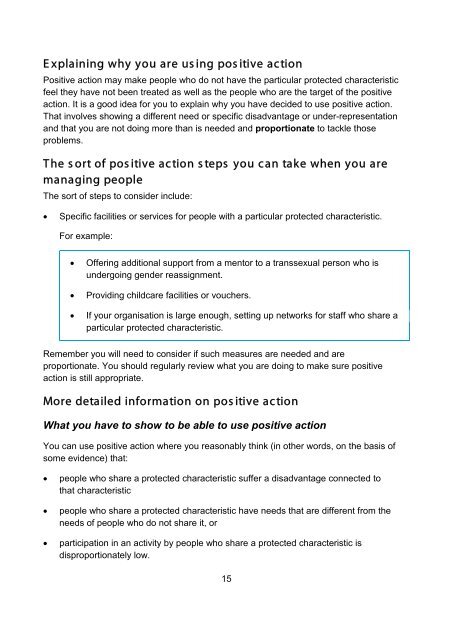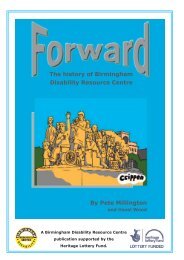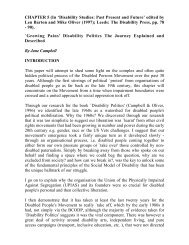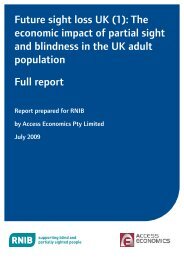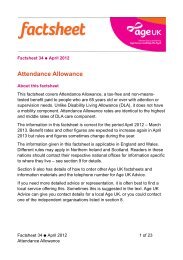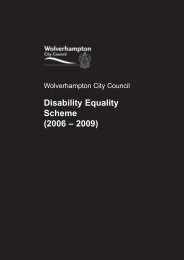What equality law means - Birmingham Disability Resource Centre
What equality law means - Birmingham Disability Resource Centre
What equality law means - Birmingham Disability Resource Centre
You also want an ePaper? Increase the reach of your titles
YUMPU automatically turns print PDFs into web optimized ePapers that Google loves.
Explaining why you are using positive action<br />
Positive action may make people who do not have the particular protected characteristic<br />
feel they have not been treated as well as the people who are the target of the positive<br />
action. It is a good idea for you to explain why you have decided to use positive action.<br />
That involves showing a different need or specific disadvantage or under-representation<br />
and that you are not doing more than is needed and proportionate to tackle those<br />
problems.<br />
The sort of positive action steps you can take when you are<br />
managing people<br />
The sort of steps to consider include:<br />
• Specific facilities or services for people with a particular protected characteristic.<br />
For example:<br />
• Offering additional support from a mentor to a transsexual person who is<br />
undergoing gender reassignment.<br />
• Providing childcare facilities or vouchers.<br />
• If your organisation is large enough, setting up networks for staff who share a<br />
particular protected characteristic.<br />
Remember you will need to consider if such measures are needed and are<br />
proportionate. You should regularly review what you are doing to make sure positive<br />
action is still appropriate.<br />
More detailed information on positive action<br />
<strong>What</strong> you have to show to be able to use positive action<br />
You can use positive action where you reasonably think (in other words, on the basis of<br />
some evidence) that:<br />
• people who share a protected characteristic suffer a disadvantage connected to<br />
that characteristic<br />
• people who share a protected characteristic have needs that are different from the<br />
needs of people who do not share it, or<br />
• participation in an activity by people who share a protected characteristic is<br />
disproportionately low.<br />
15


